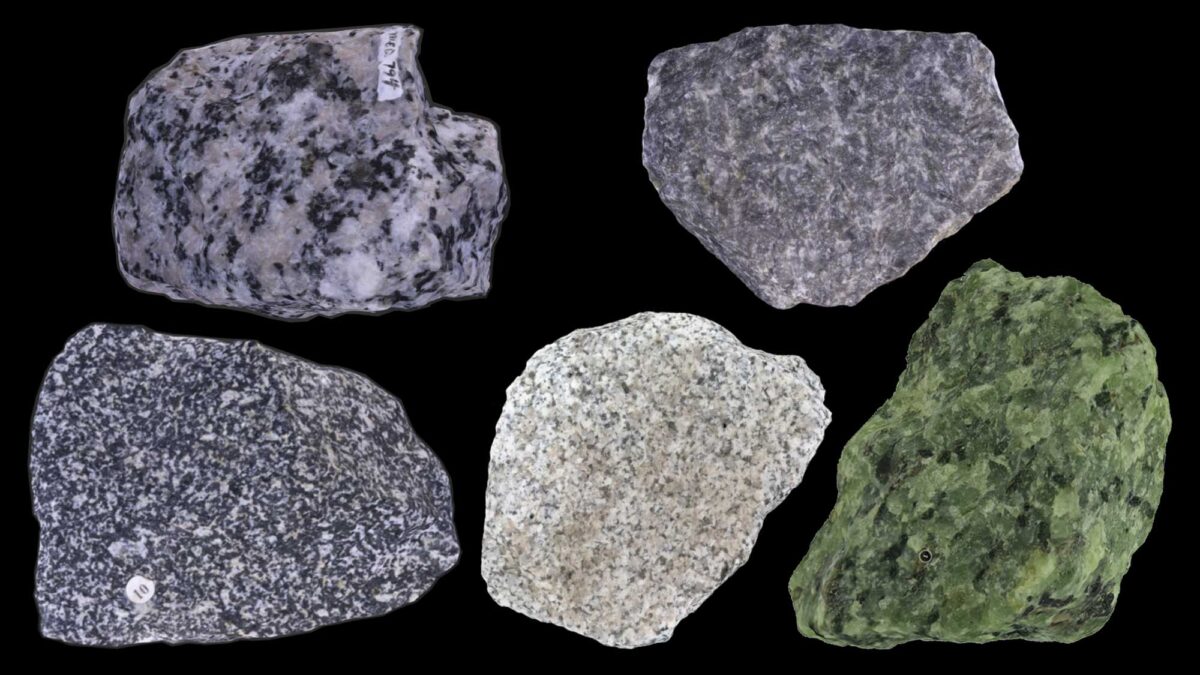Virtual Rock Collection
Igneous Rocks
Sedimentary Rocks
Metamorphic Rocks
Image above: Examples of different types of intrusive igneous rocks. Sources of individual rock images are derived from 3D models on Sketchfab with Creative Commons licensing; see same models below for creator credits and licensing details.
Overview
Intrusive (or, plutonic) igenous rocks form from magma that has cooled below the Earth's surface. Because this cooling process is slow, visible (or, phaneritic) mineral grains have time to form and are usually visible with the naked eye. When any mineral grains in a sample exceed 2 cm in size, the rock is called a pegmatite.
Crystalline intrusive igenous rocks are classified based on their underlying mineral compositions (as are equivalent extrusive igenous crystalline rocks). Felsic intrusive igneous rocks (e.g., granite) are usually light in color because they are rich in minerals like feldspar that contain a lot of Al, Na, or K. Mafic intrusive igneous rocks (e.g., gabbro and peridotite) are darker in color, again reflecting the compositions of the minerals present, which tend to be rich in Mg and Fe. As might be expected, there are intrusive igenous rocks with compositions that are somewhere between felsic and mafic (e.g., granodiorite and diorite). These five intrusive igneous rocks are presented below in order of most felsic to most mafic.
Granite
Granite is rich in quartz, potassium feldspar, and mica (muscovite or biotite). It is the intrusive equivalent of rhyolite.
Sample of granite from Romania; longest dimension is approximately 10 cm. Model by Museum of Mineralogy and Petrography, UAIC (Sketchfab).
Granodiorite
Compared with granite, granodiorite contains much more plagioclase than potassium feldspar and smaller amounts of quartz. Granodiorite is the intrusive equivalent of dacite.
Diorite
Diorite consists mostly of plagioclase and contains very little, if any, quartz; dark-colored amphibole or pyroxene are also present. This rock is the intrusive equivalent of andesite.
Gabbro
Gabbro is a dark-colored rock that contains abundant pyroxene and olivine, as well as some calcium-rich plagioclase. It is the intrusive equivalent of basalt.
Peridotite
Peridotite is easily identified by its green color, owing to the very large amount of olivine that is present.
Pegmatite
Pegmatites are intrusive igneous rocks that have individual mineral grains that exceed 2 cm in size.
Sample of pegmatite. Model by Nathan Siddle at The University of Queensland School of Earth Science (Sketchfab).



